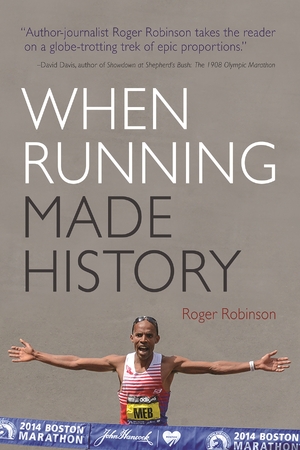"Kimball shows readers that sports are far more complex than just understanding the achievements of the athletes. . . . Recommended."—Choice
"Against all the laws of nature, certain sports heroes pull off the extraordinary stunt of running faster, jumping higher, hitting a ball farther after they die. In a word, athletes-think George Gipp (the Gipper), Lou Gehrig, Dale Earnhardt-achieve immortality, the same elusive stuff Achilles sought on the battlefields of Troy. How and why the immortalization process happens-media coverage, Hollywood, family activism-is the question this captivating project answers. Richard Ian Kimball spotlights Joe DiMaggio, Bonnie McCarroll, Benny Paret, Mickey Mantle, Ted Williams and many other notables, all to uncover the mythmaking behind the legend."—Foreword Reviews
"Focuses on case studies of famous athletes who died young, examining especially the post–World War II generation and arguing that 'modern sports help Americans to suppress the fears associated with their own mortality.' Chapters trace the afterlives of such athletes as Lou Gehrig, George Gipp, Bonnie McCarroll, Lane Frost, Benny Paret, Dale Earnhardt, Joe DiMaggio, Mickey Mantle, and Ted Williams."—American Literature
"Beautifully written, solidly researched, and a pleasure to read. Kimball tends to a difficult subject in a straightforward, conversational style and raises questions worthy of debate. . . .By examining reactions to the shocking deaths of American sports heroes, Kimball illuminates the role of sports in addressing wider social and cultural anxieties the fallen have left behind."—Journal of Sport History
"This is a fascinating and engaging study with relevance to the fields of sport studies, history, and American studies. . . . It will have great potential to attract a broader readership as well given its popular subject matter and readability."—Travis Vogan, author of Keepers of the Flame: NFL Films and the Rise of Sports Media
Description
With every touchdown, home run, and three-pointer, star athletes represent an American dream that only an elite group blessed with natural talent can achieve. However, Kimball concentrates on what happens once these modern warriors meet their untimely demise. As athletes die, legends rise in their place.
The premature deaths of celebrated players not only capture and immortalize their physical superiority, but also jolt their fans with an unanticipated intensity. These athletes escape the inevitability of aging and decline of skill, with only the prime of their youth left to be remembered. But early mortality alone does not transform athletes into immortals. The living ultimately gain the power to construct the legacies of their fallen heroes. In Legends Never Die, Kimball explores the public myths and representations that surround a wide range of athletes, from Lou Gehrig and Joe DiMaggio to Dale Earnhardt and Bonnie McCarroll. Kimball delves deeper than just the cultural significance of sports and its players; he examines how each athlete’s narrative is shaped by gender relations, religion, and politics in contemporary America. In looking at how Americans react to the tragic deaths of sports heroes, Kimball illuminates the important role sports play in US society and helps to explain why star athletes possess such cultural power.
Table of Contents
Introduction
Making Immortals
1. Why Lou Gehrig Was Lucky
A Meditation on the Mortality of American Athletes
2. The Gipper Wins One for the Gipper
George Gipp, Knute Rockne, and Ronald Reagan
3. Only Cowgirls Get the Blues
Bonnie McCarroll and Lane Frost
4. Who Killed Benny Paret?
5. “Princess Diana with a Pushbroom Mustache”
Dale Earnhardt and the Narratives of a NASCAR Death
6. To an Athlete Dying Old
Joe DiMaggio, Mickey Mantle, and Ted Williams
About the Author
Richard Ian Kimball is associate professor of history at Brigham Young University. He is the author of Sports in Zion: Mormon Recreation, 1890–1940.
April 2017




